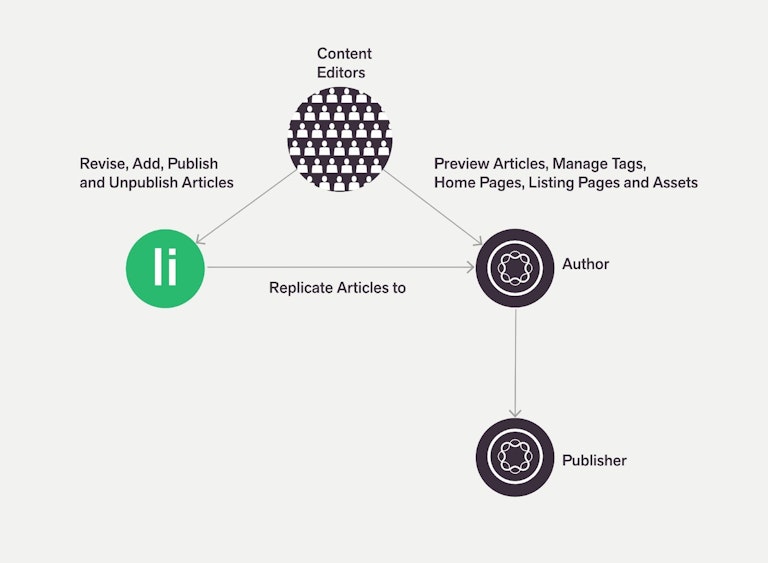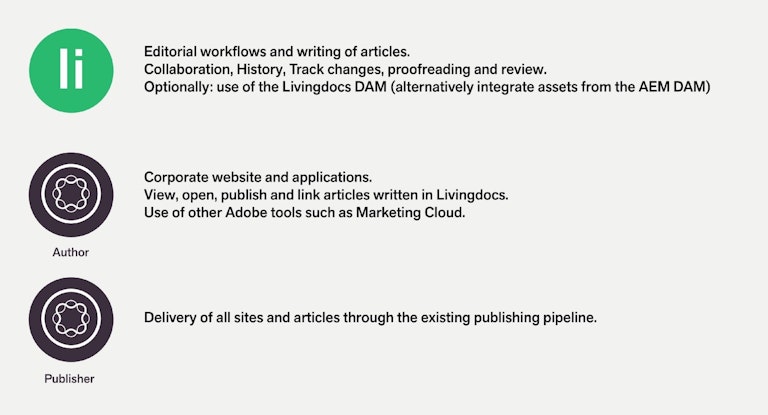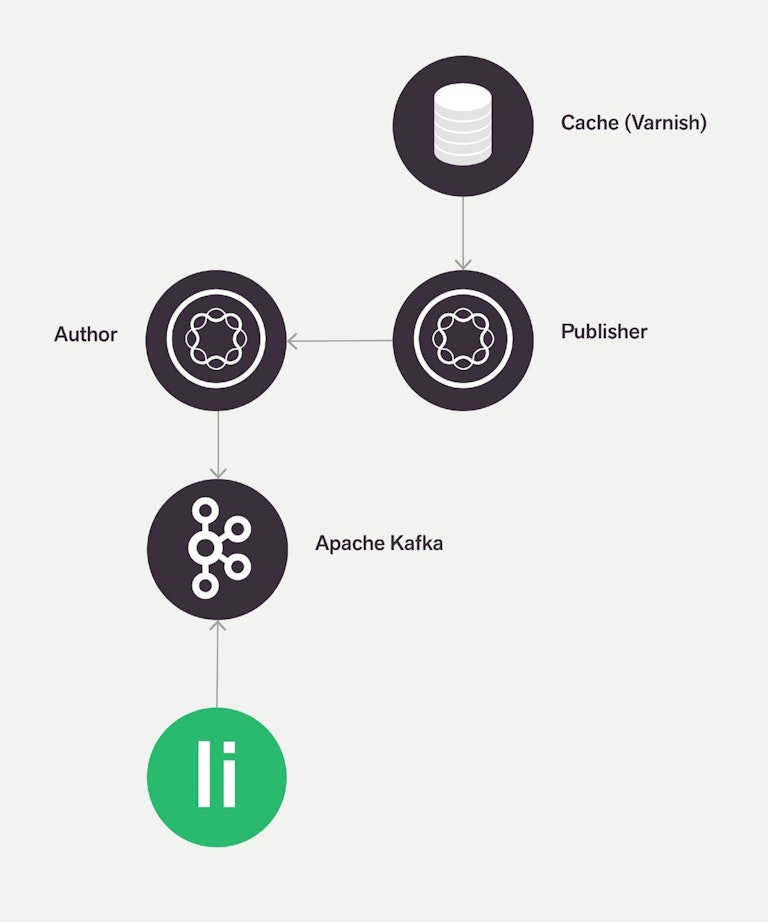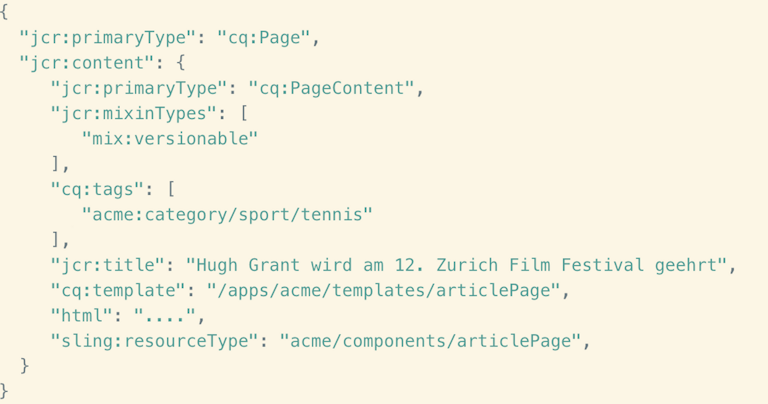TEch
Livingdocs and Adobe: Bring Your Publishing Tools to the Next Level
Adobe AEM is the Gartner leader in content management and one of the most widespread solutions in the corporate CMS landscape. Big companies from UBS to Airbus trust the solution to run their large, multi-national web applications and have built up whole teams internally and externally to support the software.
Livingdocs on the other hand is a system that subscribed to the vision to make publishing on the web both easy and powerful. Large publishing houses such as NZZ and Süddeutsche Zeitung trust the solution and thousands of journalists use it every day to produce the news you consume every day.
With the advent of publishing in corporations this yields a huge potential. We’ve realized this potential and built the Livingdocs Editor Cloud, a fully cloud-managed solution that integrates with existing Adobe AEM installations. The rest of this article will shed light on how exactly our solution works and how the integration with Adobe AEM was done.
How it works
The idea is simple. We provide you a fully cloud-hosted and managed Livingdocs instance where your editors can login via any web browser. Everything they write in Livingdocs automatically lands in your existing Adobe AEM installation and is published to the web using your existing AEM pipeline. You get the best of both worlds: the superior publishing editor Livingdocs together with your existing corporate CMS solution.

Responsibilities
Our Editor Cloud defines a clear separation of concerns in order to ensure conceptual consistency.

AEM remains responsible for the information architecture and is responsible for the technical publication of all articles. This ensures consistency in the content architecture and allows to keep concepts that are implemented in AEM such as Tagging. Since the articles are delivered through AEM Author and Publisher we guarantee consistency towards other system layers such as the caching solution.
Livingdocs is responsible for all content that is written in the Livingdocs Editor and all content related workflows such as reviews, proofreading and orchestration of collaboration with document history (time machine) and track changes. Optionally, the Livingdocs DAM can be used to manage images. This setup ensures consistency of content states, i.e. articles from AEM Author can not conflict with their counterparts in Livingdocs.
In order to realize this separation of concerns, certain functions are turned off in AEM Author, e.g. the ability to copy, delete or create articles can be disabled in AEM using standard ACL configurations. This guarantees that articles are only copied, deleted and created in Livingdocs and no conflicts arise.
Data Flow
This section is a bit technical and oriented towards AEM implementers. Feel free to skip to the final section.

All data flows are based on a JSON format. Both Livingdocs and AEM support JSON natively and JSON nicely integrates into the AEM underlying JCR data storage. Communication between Livingdocs and AEM Author is orchestrated via a service bus (Apache Kafka is our weapon of choice here) and ensures nothing is ever lost in transit as well as providing traceability and replicability.
The JSON that Livingdocs sends to AEM Author exactly matches the target JCR structure. Metadata is mapped to the respective JCR nodes of your existing AEM installation and the article itself is rendered in Livingdocs to HTML and provided to JCR as an html node. The example below visualizes a possible JCR structure exported from Livingdocs.

This minimizes dependencies between the two systems as AEM doesn’t need to have any knowledge of the Livingdocs specific data format.
Another topic are the URIs of articles. They are generated in Livingdocs and passed to AEM just like the rendered HTML article. The form of the URI follows a mutual pattern, usually the existing URI pattern used in AEM.
Authentication is solved using SSO enabling editors to have one login for both systems and easily navigate between Livingdocs and AEM without the need to re-authenticate.
1+1 makes 3
Using AEM together with Livingdocs gives you a whole new level of possibilities. Rather than just sticking to the abilities of one system you combine strengths and get a publishing solution on par with what large publishing houses are using.
Corporate communication is becoming ever more crucial as brands enter the information landscape and not only inform sales decisions but also public opinion and discussion, a realm previously assigned to the traditional mass media.
With great potentials, new challenges arise. Livingdocs and AEM give you the tools you need to tackle those challenges and enter the future of corporate communication.